Great news about the environment - share your stories

According to “breakthrough” new research, funded by a clutch of consumer goods firms, French scientists have discovered a plastic-eating enzyme they claim could offer an innovative recycling solution for millions of tonnes of toxic plastic waste material.
http://econews.com.au/64104/mutant-enzyme-created-by-scientists-recycles-plastic-bottles-in-hours/
CORONAVIRUS FREE ZONE PLEASE (unless it relates to good news about the environment)


Incognito
Sounds good !!
why not forward a copy of it to our Government ?

I cannot even get a reply from my local MP, every time I send her anything I get a standard reply. Besides with Angus Taylor head of energy there is no way he would be considering it, he wants to give all the clean energy money to gas.

Major move forward for plan to send solar power from Australia to SingaporeBy David Twomey - May 28, 2020 100 0 
Survey work will soon begin on an ambitious plan to export power from a giant solar farm in Australia to Singapore via a 3800-kilometre undersea cable.
The Sun Cable project, which is backed by Atlassian co-founder Mike Cannon-Brookes and Fortescue Metals’ founder Andrew Forrest, has awarded a contract to Perth-based Guardian Geomatics to conduct a route survey for the high voltage direct current cable.
 Bloomberg newsagency reports Mr Cannon-Brookes has championed the “lighthouse” project as a demonstration of how Australia can harness its natural advantages in clean energy and wean off its reliance on coal and gas export revenues.
Bloomberg newsagency reports Mr Cannon-Brookes has championed the “lighthouse” project as a demonstration of how Australia can harness its natural advantages in clean energy and wean off its reliance on coal and gas export revenues.
“This initial survey is a major step toward an exciting, multibillion-dollar project, described as exporting ‘sunshine’ to Asia,” Guardian Geomatics said in a media release.
 Guardian Geomatics Commercial Director, Steve Duffield, said, “Guardian Geomatics are always on the lookout for opportunities to improve our footprint and sustainability, this project is a step in the right direction and something we are very proud of.”
Guardian Geomatics Commercial Director, Steve Duffield, said, “Guardian Geomatics are always on the lookout for opportunities to improve our footprint and sustainability, this project is a step in the right direction and something we are very proud of.”
Sun Cable said the project could supply a fifth of Singapore’s power needs, helping to reduce the city-state’s reliance on natural gas imports.
Bloomberg reports the project also has plans to link to Indonesia.
 Funds connected to Mr Cannon-Brookes and Mr Forrest co-led a capital raising for the project last November.
Funds connected to Mr Cannon-Brookes and Mr Forrest co-led a capital raising for the project last November.
The total capital cost is seen in the region of $20 billion, with commercial operations targeted to start in 2027.
The company is also working to install a 50-megawatt big battery near Darwin in Australia’s Northern Territory.
 Sun Cable recently secured environmental clearance for the huge battery near Darwin that it is aiming to install ahead of the mega-cable, and is aiming to get the final green-light for construction in early 2021.
Sun Cable recently secured environmental clearance for the huge battery near Darwin that it is aiming to install ahead of the mega-cable, and is aiming to get the final green-light for construction in early 2021.
The facility would initially provide back-up services to the local power grid, but will ultimately form part of a larger storage system to support the Australia-ASEAN Power Link project.
 Construction is slated to commence in 2021, with commissioning targeted for 2022.
Construction is slated to commence in 2021, with commissioning targeted for 2022.
The Northern Territory Government included the project in its recently released green paper for the economic revival of the territory.

No point waiting for the Government to do anything, moving to exporting renewable energy is the way forward. Hope it all goes to plan and with no damage to marine life along the way.

Not impressed ... miles and miles of solar panels destroy the natural habitat on ground
after the initial clearing the area is continuously sprayed with weed killer
.... this destroys the natural habitat of many animals, birds and insects.
Unfortunately I believe marine life will also be affected, not only through construction but through continuous energy surging through the cables

Never thought about that Suze, good points, thanks for informing me. Though I have seen farming land have solar panels with the sheep enjoying the shade so hopefully more will do it that way rather than using weed killer, it is a win win for farmers benefitting from keeping their sheep with better grass and shade and earning an income.
Yes I was worried about the marine life too, but remember coal is much worse all round. I do believe that we should be encouraging more centralized solar rather than making it miles away and sending it to the grid.


Floating solar Panels not only produce energy but also the shade stops evaporation.

That is an interesting concept, I can imagine that marine life would hide under it, but will any get caught up in it might be a worry. I guess it would only suit certain areas.

I think you can only have it in freshwater like dams etc

This man is bad for the environment and for the world.


Yes, has reversed a lot of protections ,but this is a "good news about the environment" thread, maybe I should start a bad news one?

Maybe you should stop whining and realise that you cannot get a good environment until you eradicate the bad stuff.
Poverty is bad for the environment.


Maybe you should stop saying people are whining when they say something you do not like, and stop trying to sabotage good threads with negativity. Haven't you got anything better to do than focusing on negativity?
Poverty is made worse with a destroyed environment, they cannot grow food in a degraded land for example. They cannot live in a desolate landscape that has all vegetation cleared. They cannot drink clean water and be healthy with all the chemicals being washed into rivers and water tables, etc etc.

Burying your head in the sand and pretending bad things don’t happen, shows a very negative personality.
Incognito you have to accept this reality, then work to create a more positive attitude. What have you done recently to help humanity. Keeping guard over a stupid thread is a useless ocupation.

You never let up do you? I am a very positive person and do not ignore the negatives in live, I deal with them as they arise like normal people do, I do not dwell on and worry though like you. Why are you even on this thread if you think it is useless, just go away, you are not wanted here! I will ignore all your posts from now on because you somenhow get a kick out of making stupid statements about people on here that you do not know personally and think you have some kind of right to judge, go and bury your own head if it is not too big.

You appear to be getting too big for your bloomers, maybe you start own website que? Then you can guard it night and day, day and night, LOL

WHY NUCLEAR POWER IS GOOD FOR THE ENVIRONMENT
Nuclear power releases less radiation into the environment than any other major energy source.
Studies indicate even the worst possible accident at a nuclear plant is less destructive than other major industrial accidents.
Nuclear waste disposal, although a continuing political problem, is not any longer a technological problem.
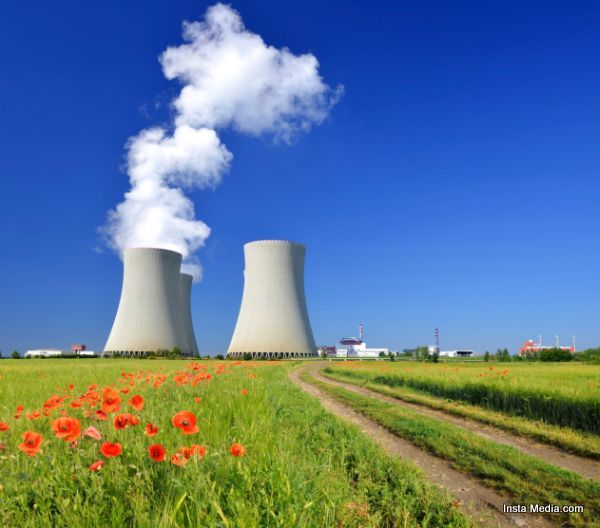

Then you can store the spent rods in your backyard.

Those chimneys are releasing steam only.

The Lightyear One motor vehicle is covered with a total of five square meters of solar panels
Lightyear has unveiled the first prototype of the Lightyear One, an electric vehicle covered in solar panels that it plans to start delivering to consumers in 2021. The car company was founded in 2016 by ex-members of Solar Team Eindhoven, a team of engineering students who won the solar-powered World Solar Challenge race in 2013, 2015, and 2017.
While the team claims that the car will get 450 miles (725 km) of range from its built-in battery, the real draw is the car’s five square meters of solar panels, which cover its roof and hood and can charge the car’s battery with up to 12 km of range an hour. Lightyear claims these solar cells are 20 percent more efficient than traditional models, and they’re encased in safety glass to protect them from damage.
Lightyear One can also be charged like a more traditional plug-in electric vehicle. It will support up to 60kW of fast charging, giving it 507 km of range per hour of charge. The car has a total of four electric motors, which will allow it to accelerate from 0 to 100 kmh in 10 seconds.
I definitely like its style :)
Picture link below

Interesting car, windows a bit squashy for me though.

First Hybrid Floating Ocean Platform Can Generate Power From Waves, Wind, And Solar
We know renewable energy technology can produce electricity from the sun’s rays, the force of the wind, and the power of the waves—which makes one wonder why this new 3-in-1 offshore platform wasn’t made 20 years ago.
The maritime energy generator developed by German company Sinn Power goes where the power of these three forces of nature are often strongest—the ocean. With its onboard equipment, it can generate power from the force of the water underneath as well as the wind and sun above.
“The modular design has been a key element since we started developing maritime technologies that allow flexibility and a wide variety of applications” Dr Philipp Sinn, CEO Sinn Power told Forbes. “The floating platform can supply renewable energy to islands across the world, for example, and contribute to the worldwide implementation of offshore wind farms.”
The prototype, which started as a patent application merely 2 years ago, is now stationed off the coast of Greece. It’s being offered to solar energy companies as a golden opportunity to test and demonstrate photovoltaic arrays to be stationed on a fleet of future platforms.
RELATED: World’s Largest Green Hydrogen Plant Will Soon Be Turning California’s Trash into Ultra-Cheap Fuel
As is so often the case with new energy solutions, the design is lightweight, scalable, durable, and easy to repair—but the platform raises or lowers itself, depending on the height of the waves around it.
When fully outfitted with solar panels and windmills, the platform can generate 26 kilowatts of renewable energy. Far more reliable than wind and solar, most of the energy generated by the platform would come from waves—synced as they are with the tides and uninterrupted by clouds or darkness.
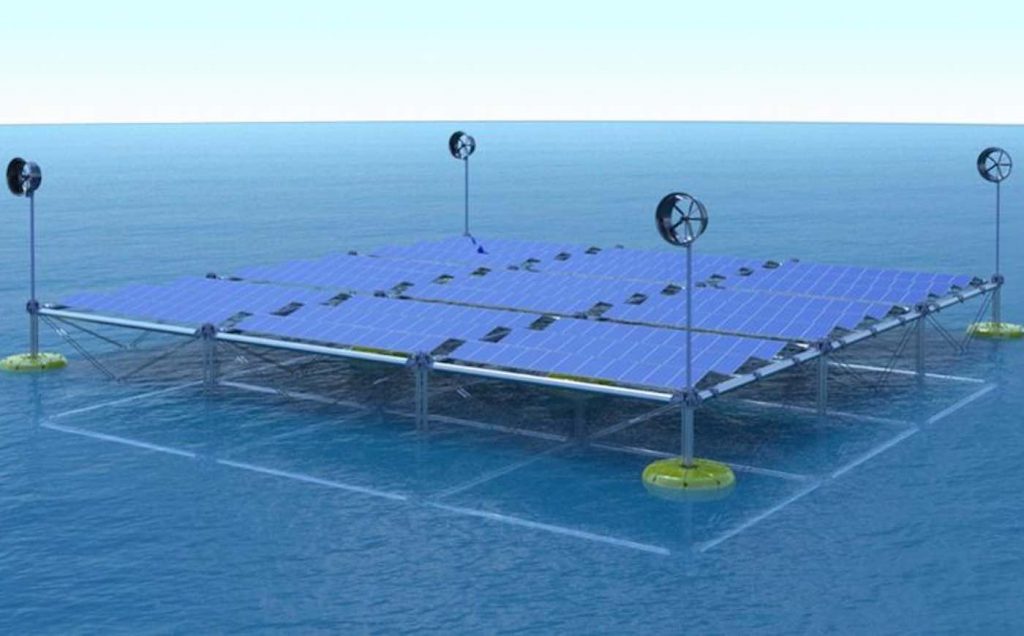
Many island communities across the world rely on portable energy sources like diesel generators or cheap coal power plants—like on the island of Siberut in Indonesia, where locals have been forced to develop bamboo-powered bioelectric power stations to get energy to small hamlets. Offshore sources like Sinn Power’s flotilla could offer another way to get electricity to island communities.
“We are now preparing the floating platform to be used as a showcase, to enable wider access for potential customers. Politicians and representatives from other European nations have already visited. The next goal is in the autumn, when hopefully we’ll be able to start marketing our unique electronics set,” Sinn said.

An invisible roadside fence designed to reduce the number of animals being killed on the road is being trialled on the Sunshine Coast in Queensland and on Victoria's Phillip Island.
The virtual fencing includes a device attached to a pole by the side of the road. The device is triggered by vehicle headlights and emits a buzzing sound and flashing light to warn nearby wildlife of approaching vehicles.

Tasmanian-based company Wildlife Safety Solutions sells the technology to local councils. Sam Fox, a wildlife biologist from the Save The Tasmanian Devil Program, was part of the first Australian trial of virtual fencing from 2014 to 2017. Dr Fox said "There was a 50 per cent decline in roadkill within the area which had the virtual fencing."

Fantastic, hope it works, this is where technology can help the environment in a good way.

Man Plants A Tree Every Day For 40 Years Now Has A Forest Bigger Than Central Park
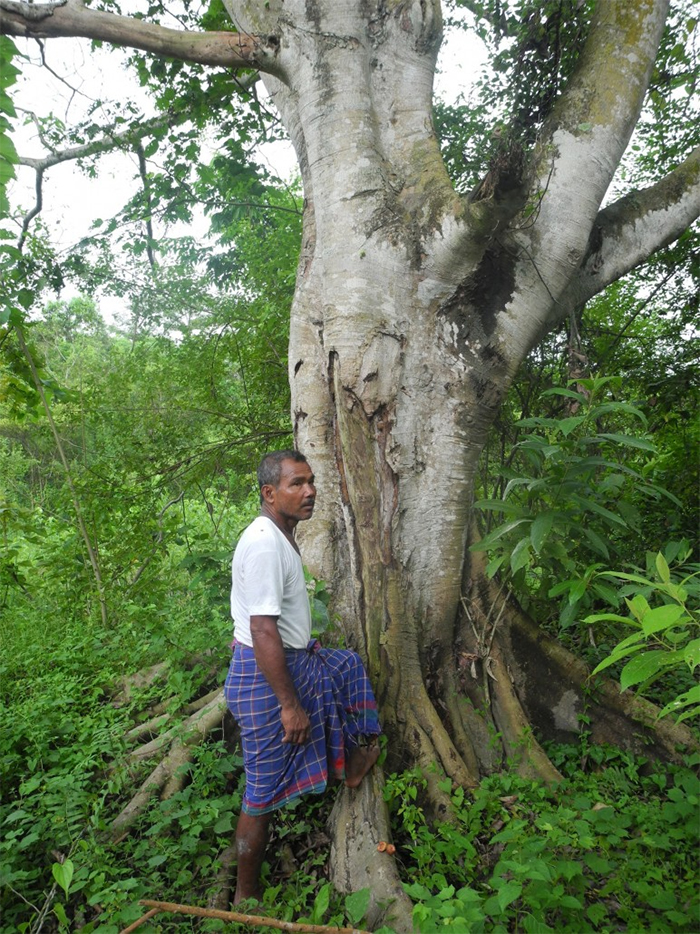
What used to be a landscape devastated by erosion is now 1,360 acres of forest and it's all thanks to one Indian man named Jadav Payeng. Jadav planted a tree every single day for 40 years and now this man-made forest is bigger than Central Park. Now this incredible forest is home to hundreds of elephants, rhinos, boars, reptiles, and birds. This botanical-enthusiast says he is planning to plant trees until his "last breath". “Nature is God. It gives me inspiration. It gives me power … As long as it survives, I survive." If you want to learn more about this hero, you can check a short documentary dedicated to his work.

Isn't it fantastic, what one man can do, imagine if more of us did the same if we only had the land to do it. What an achievement. I have heard about this guy before, so thanks for the reminder.

I watched the short doco, lovely story, what a humble man.

He would have to have a lovely nature to do all that work over a period of 40 years Incognito; he has been passionate about his love of nature.

Timing crucial to mitigate against soil erosion
https://www.farmweekly.com.au/story/6606696/timing-crucial-to-mitigate-against-soil-erosion/#!
2 Feb 2020, 10 a.m.Cropping News
There are several production and land management benefits to be gained from delaying soil amelioration works until the soil is moist, including mitigating the risk of soil erosion as a result of dry seasonal conditions.
THERE are numerous agronomic and operational benefits to be gained from delaying soil amelioration until the soil is moist, in addition to minimising the risk of soil erosion, according to the Department of Primary Industries and Regional Development (DPIRD).Western Australian grain growers have become increasingly interested in the use of rotary spaders, large offset discs, mouldboard and one-way ploughs to mix or invert the soil and reap long term agronomic and production benefits.
But below-average growing season rainfall throughout the grainbelt last year and ongoing dry conditions has led to a lack of ground cover, elevating the risk of losing valuable topsoil from wind and water erosion from soil disturbance.
DPIRD research scientist Stephen Davies said delaying soil amelioration until the soil was moist would both reduce the erosion risk and create several opportunities.
"Tillage equipment works more effectively in moist soil, particularly subsoils," Dr Davies said.
"Sands, in particular, are more cohesive enabling the soil to be carried on the spades of a spader to achieve effective mixing or to 'hold and fold' on discs and plough boards for inversion.
"Implements operating in moist soil are able to work deeper and operate more efficiently at optimum depth."
Reduced resistance from working in moist soil also uses less horsepower and puts less strain and wear on tillage equipment and tractors, saving fuel and maintenance costs and generating efficiencies.
Dr Davies said there were also agronomic advantages to undertaking amelioration in moist soil.

Soil erosion is a huge problem and without proper mangagment we will see more clouds of dust appearing in cities.
Why we need to listen to the people who are doing regenerative farming.

Tried to up load photos of erosion in Tanzania but the would allow it sadly took ages so had to delete it.

Just post the link if you can.

https://www.theguardian.com/environment/gallery/2017/may/04/soil-erosion-in-tanzania-in-pictures


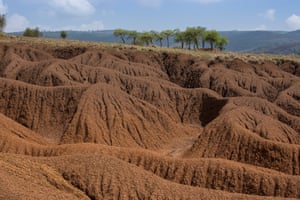
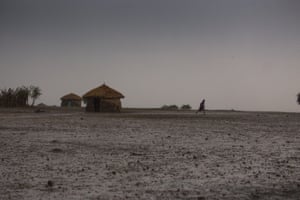



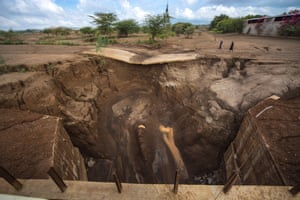
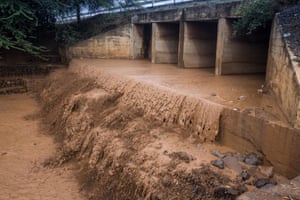

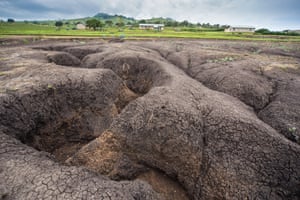
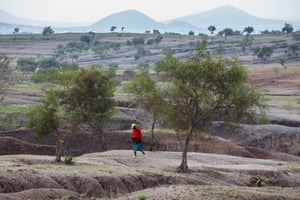
Lake Manyara national park is a hotspot for biodiversity as it supports more than 400 species of birds, big land mammals and aquatic fauna. This fragile ecosystem attracts more than 150,000 tourists every year, creating livelihoods for many local people. But increased siltation and pollution is threatening the preservation of this Unesco Man and Biosphere site.

That is shocking. do you think I need to change the name of this thread to "good and bad news about the environment" or start a separate one for "bad news about the environment'? What do other's think too?

I think you should

I think that is what Ccilia was wanting to put up ?

Suze you have put up what I tried to do this afternoon, there have been several items I have wanted to load and they didn't go. Perhaps they were too large or the webmaster was working on the site? Thank you for helping.

Tried to up load photos of erosion in Tanzania but the would allow it sadly took ages so had to delete it.

Pangolins are one of the most heavily trafficked animals in the world, and as a result they are endangered. But in the past few weeks they have been linked to the initial outbreak of the Covid-19 disease in China. The evidence is inconclusive, but it has already prompted the Chinese government to take action. If more actions against the wildlife trade follow, the incident could prove to be a turning point for pangolin conservation.
Now pangolins will be safe.
Pic by the Guardian

Yes Lucca they were thats a very good photo of one.

Lucca: Now pangolins will be safe.
Great news!!


Yes lets hope this conservation continues

Australian dive operators use their downtime to plant coral on the Great Barrier Reef
AMONG THOSE LEFT with little to do by the coronavirus pandemic are many of the world’s tour guides, unable to congregate in groups and generally not having any tourists to lead. A dive tour operator in Australia has launched a plan for their idle hands — planting coral along the Great Barrier Reef. Five Australian reef companies have committed to working alongside scientists in using their downtime to help restore the country’s imperiled reef.
Passions of Paradise, a dive tour operator based in Cairns, Queensland, has donated a ship and fuel to be used for a coral planting mission at Hastings Reef. Australian travel publication Karryon reported that four of the company’s staffers have been working alongside scientist Dr. David Dugget as part of the Coral Nurture Program.
“We have been assisting Dr. David Suggett’s team from the University of Technology Sydney who is conducting reef resilience research at one of our 26 reef sites,” said Passions of Paradise CEO Scott Garden to Karryon. “I have been working with Passions of Paradise Environmental Sustainability Coordinator Russell Hosp at the site most weeks recording data for the project and establishing a coral nursery.”
The Coral Nurture Program began last year and has planted more than 1,000 pieces of coral on Hastings Reef. The Great Barrier Reef has experienced mass bleachings in recent years due to warming ocean temperatures and strain on the surrounding environment. Passions of Paradise plans to begin operating tours once local shelter-in-place orders have been lifted in the area, allowing divers to visit the reef and assist with local conservation efforts.


Would be great if our Government supported things like this:
World’s Largest Green Hydrogen Plant Will Soon Be Turning California’s Trash into Ultra-Cheap Fuel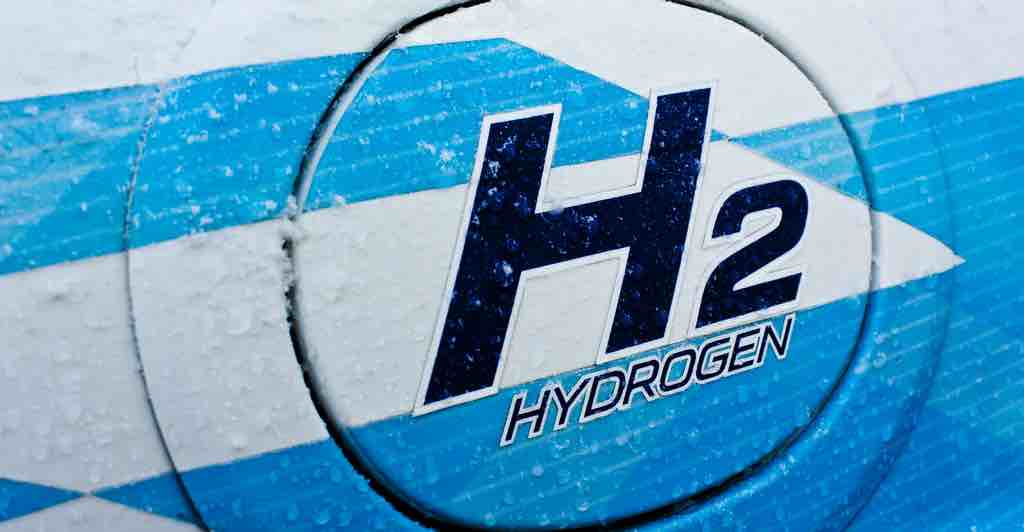
California will soon be the home of the largest trash-to-hydrogen power plant in the world.
Similarly to the iconic scene at the end of the Back to the Future film, scientists will be using trash such used paper, old tires, textiles, and plastic to produce the cheapest and greenest hydrogen energy on Earth.
Super-green Hydro (SGH2) is launching the plant in partnership with the city of Lancaster, which will start processing 42,000 tons of solid waste into hydrogen energy around the start of 2021.
“We are the only company in the world delivering green hydrogen that is cost-competitive with the cheapest, dirtiest hydrogen made from coal and gas, and much less expensive than other green hydrogen,” says SGH2 CEO Dr. Robert Do. “Our technology can scale quickly and produce fuel 24/7, year-round.”
RELATED: Not Only Does New Solar Chimney Design Cut Energy Costs By 50%, It Can Also Save Lives During a Fire
Operating 24 hours a day for 7 days a week, the Lancaster plant will produce 24,000 pounds (11,000 kilograms) of hydrogen per day. According to SGH2, this makes them 3 times bigger than any other hydrogen energy plant, a source which they describe as being the “missing link” to a decarbonized world.
Greener than green hydrogen
SGH2 have created a system whereby oxygen-rich gas is fed into a chamber containing a plasma torch that heats the inserted trash component past 3,500 degrees Celsius. This rapid change of state—from solid, to liquid, to gas, and finally to plasma—separates the hydrogen atoms from hydrocarbon molecules which is then used for energy. The high heat also removes any tar or particulates that can sometimes be produced as byproducts.
Lawrence Berkeley National Lab performed a lifecycle carbon analysis of the hydrogen produced this way and found that for every ton of hydrogen produced, the technology mitigated 23 to 31 tons of carbon dioxide.
LOOK: These New Solar-Pavement Driveways Made of Plastic Bottles Can Power the Average Household
“That’s 13 to 19 tons more carbon dioxide avoided than other green hydrogen processes, which rely on electrolysis and renewable energy,” reads the SGH2 website.
Originally designed to deal with medical waste, SGH2’s plasma technology can be used to reduce waste of most kinds—anything that is a problem for landfills while also containing hydrogen atoms is fair game.
“Our process extracts all carbon from the waste … removes all particulates and acid gases, and produces no toxins or pollution. The end result is high purity hydrogen and a small amount of biogenic carbon dioxide, which is not additive to greenhouse gas emissions,” reads the SGH2 website.
MORE: Impelled by Reactor Meltdown, Fukushima Japan Vows to Achieve 100% Renewable Energy Use in 20 Years
As a result production costs (based on current US costs) are projected to be $2 per 2 pounds of green hydrogen. Brown hydrogen, the cheapest form of hydrogen that accounts for about 30% of all hydrogen energy, is produced from a process of coal gasification at about the same cost, though it varies depending on the country.
Finally, the design of the technology allows it to be scalable to any size operation while using less land and requiring less capital to build than the current green hydrogen plants relying on wind farms or solar panels to generate power for electrolysis.